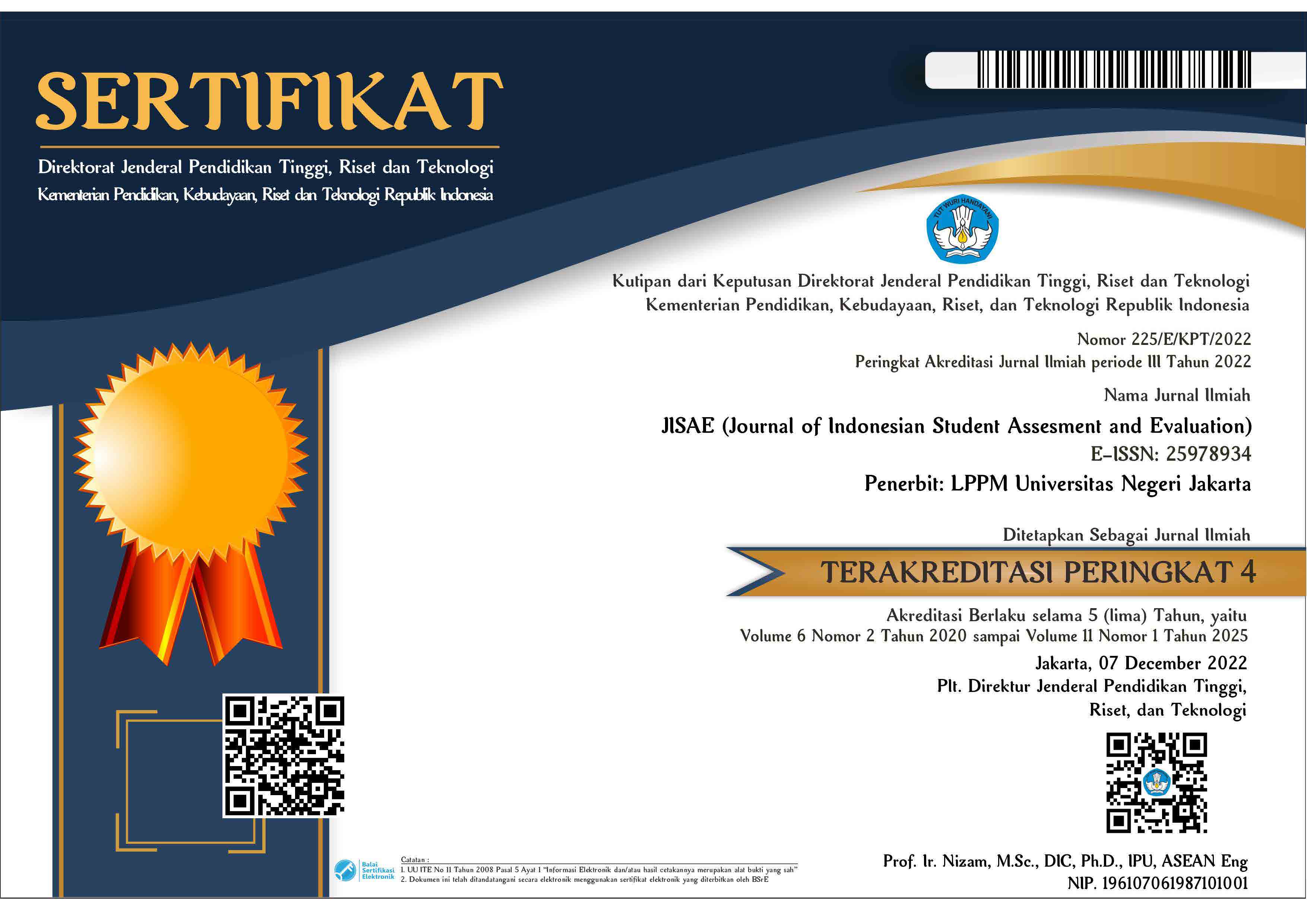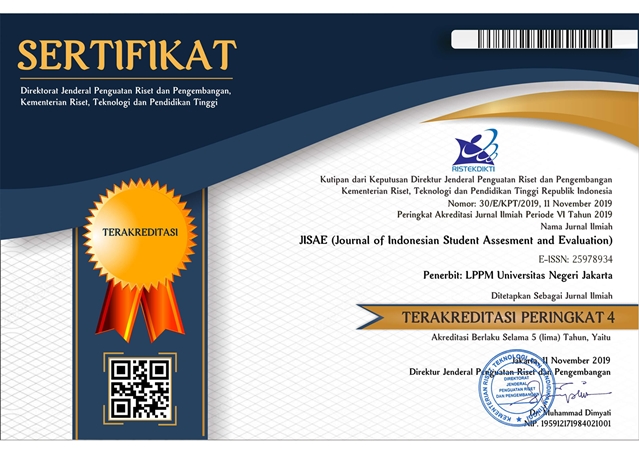Developing a Validated Essay-Based Assessment Instrument to Measure Science Literacy in Energy Topics
DOI:
https://doi.org/10.21009/jisae.v10i2.50762Keywords:
Science Literacy; Assessment Instrument; Essay Test; Energy Concepts; Exploratory Factor Analysis (EFA).Abstract
Science literacy is a critical skill in the 21st century, particularly for middle school students navigating the complexities of energy concepts in science education. This study aims to develop and validate an essay-based assessment instrument designed to measure students' science literacy skills in the context of energy. Employing a mixed-methods approach, the research involved expert validation, panel validation, and empirical testing with 111 students from junior high school in Sukabumi, Indonesia. The results revealed that the instrument possesses strong content validity, with Aiken's V, CVR, and I-CVI scores exceeding 0.80. Construct validity analysis using Exploratory Factor Analysis (EFA) confirmed the suitability of the factor structure, while reliability tests yielded McDonald’s ω = 0.886 and Cronbach's α = 0.922, indicating excellent internal consistency. The instrument also includes a detailed analytical rubric to ensure objective and transparent evaluation. This validated tool offers educators a reliable means of assessing students' science literacy comprehensively, addressing a critical gap in science education evaluation. By fostering more effective assessment practices, this study contributes to enhancing the quality of science education in Indonesia and beyond.
Downloads
Published
How to Cite
Issue
Section
License

This work is licensed under a Creative Commons Attribution-NonCommercial-ShareAlike 4.0 International License.










